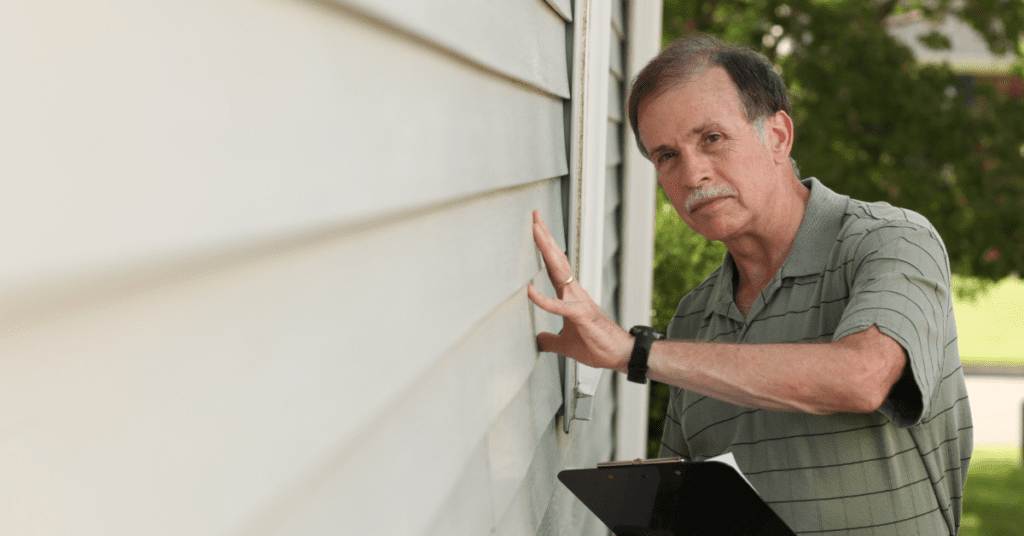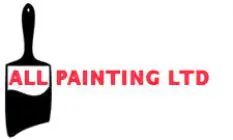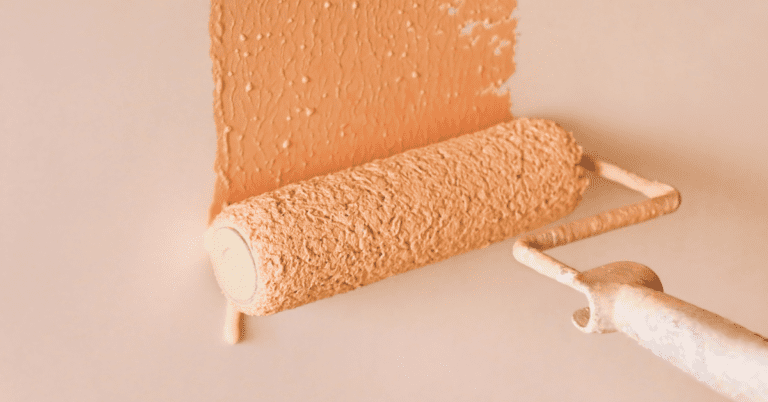Hiring a painter to complete a paint job in your home is a significant investment. Naturally, you want to ensure that the painter has done a good job and that you are satisfied with the results. But how can you determine if the quality of workmanship meets your expectations?
In this article, we will discuss the criteria you can use to evaluate the work of your painter, red flags to watch out for, how to assess the materials used, steps to prevent painting issues in the future, and what to do if you’re unhappy with the outcome. So, let’s dive in!
What red flags should I watch out for when reviewing a paint job?
When reviewing a painting job, watch out for the following red flags:
- Uneven or Patchy Paint: Inconsistent coverage and visible patches of different colors can indicate poor painting techniques or inadequate preparation.
- Drips and Splatters: Excessive drips or splatters on floors, furniture, or adjacent surfaces suggest careless workmanship and lack of attention to detail.
- Paint Runs or Sags: Paint runs or sags on walls and ceilings indicate improper application, such as applying too much paint at once or not allowing proper drying time between coats.
- Poorly Masked Areas: Paint spills or marks on trim, windows, or fixtures may suggest a lack of precision and attention to protecting adjacent surfaces during the painting process.
- Rough or Uneven Surfaces: If the painted surfaces appear rough, bumpy, or uneven, it could be a sign of inadequate surface preparation or poor paint quality.
- Paint Bleeding: When one color seeps through another, especially around edges or corners, it suggests insufficient primer or paint bleed-through due to inadequate coverage.
- Blistering or Peeling Paint: Paint that starts to blister or peel shortly after application indicates poor adhesion, inadequate surface preparation, or the use of low-quality paint. Choosing the right paint for specific areas, like bathrooms, can prevent issues like blistering or peeling. Discover what type of paint you should use in a bathroom to avoid such problems.
- Paint Lines or Edges Not Clean: Irregular or wavy paint lines along corners or trim may suggest inexperienced cutting-in techniques or improper taping.
- Incomplete Coverage: Visible patches of the original surface showing through the paint may indicate the need for additional coats or inadequate paint application.
- Messy Clean-up: A lack of proper clean-up, such as paint splatters left on floors or fixtures, can indicate a lack of professionalism and attention to detail.
- Unaddressed Repairs: If pre-existing surface damage, cracks, or holes were not properly repaired before painting, it may impact the overall quality and longevity of the paint job.
- Lack of Protective Measures: Failing to use drop cloths, masking tape, or protective coverings on furniture and floors can lead to unnecessary mess and damage.
If you encounter any of these red flags during your review of a painting job, it’s essential to address them with the painter promptly. Good communication can help ensure that any issues are resolved to your satisfaction and that the final result meets your expectations. If the painting was done by a professional company, they should be willing to address and rectify any concerns.
What criteria should I use to evaluate the work of my painter?
To evaluate the work of your painter, consider the following criteria:
1. Surface Preparation: Consider how well the painter prepared the surfaces before painting. Adequate cleaning, patching, and priming are essential for a long-lasting paint job.
2. Quality of Workmanship: Examine the overall quality of the paint job, looking for smooth finishes, clean lines, and consistent color coverage. Check for any visible imperfections or flaws, such as blistering, streaks, mottling, wrinkles, smudges, cracks, and chalky paint. Additionally, pay attention to bubbling, cracking, peeling, and ensure that the color and finish type used for the room are suitable.

3. Attention to Detail: Assess how well the painter handled intricate areas like corners, trim, and edges. Look for precision and careful application around fixtures and obstacles. To assess attention to detail, see how the painter has approached areas like trim. If you’re considering painting on your own, learn about the order in which to paint: should you paint trim or walls first?.
4. Adherence to Specifications: Evaluate whether the painter followed your specifications and instructions regarding paint colors, sheen, and any specific requirements you communicated.
5. Cleanliness and Professionalism: Take note of the painter’s professionalism, including their punctuality, organization, and cleanliness during the project. A tidy work area and proper clean-up after completion are important signs of professionalism.
6. Timeliness: Assess whether the painter completed the project within the agreed-upon timeline. Delays without reasonable explanations may be a red flag.
7. Communication and Collaboration: Consider how effectively the painter communicated with you throughout the project, addressing any concerns or questions promptly. A collaborative approach can lead to better outcomes.
8. Respect for Property: Check if the painter took necessary precautions to protect your property, including furniture, floors, and landscaping, from paint splatters or damage.
What steps should I take to prevent any painting issues from arising in the future?

To prevent potential painting issues from arising in the future, consider the following steps:
1. Ask for the contractor’s license or insurance: A quality contractor will be up to date on their licenses and insurance. If they cannot provide evidence of these, it is a sign that they may not be worthy of your business. In case of any damages, you may be responsible for the costs.
2. Make sure you have a contract: A non-existing or weak contract is a sign of a bad painting company. Ensure that the contract contains specific details, such as costs, payment schedule, warranty on their work, and any other agreements. Don’t rely on oral promises; insist on a solid contract.
3. Painting contractor should provide detailed estimates: Vague estimates may lead to hidden fees later. Quality painting contractors are clear about what you will pay for their services. Avoid contractors who don’t come to your property to make the estimate. Understanding the potential costs upfront can help set expectations and ensure a quality job. Discover more about the true cost to paint the interior of a house to be better prepared.
4. Ask if they have appropriate equipment: Top-notch painting contractors come equipped with modern tools of the trade. The lack of proper equipment may indicate a less experienced or unprofessional painter.
5. Check for referrals and recommendations: Referrals are essential in finding the best painting contractor. Only choose a painting company with at least three referrals from former customers who can vouch for their work.
Monica Harmse, an experienced Port Moody realtor, emphasizes that referrals play a critical role in finding the right contractor, particularly for homeowners planning to sell. She advises her clients to seek referrals from other real estate professionals who understand market preferences and know which painting contractors have a proven track record of delivering buyer-ready results.
By taking these preventative steps, you can minimize the chances of encountering issues with your painter and ensure a smoother and more satisfactory painting experience.
What should I do if I’m unhappy with the outcome of my painter’s work?

If you are unhappy with the outcome of your painter’s work, there are several steps you can take to address the issue:
Friendly first options for dealing with a bad painter:
1. Seek out the leader in the painting company: Express your concerns to the leader in the painting company. Approach the situation politely but be firm in your demand for the problems to be addressed.
2. Visit their offices: If your initial request receives no response, visit the painting company’s offices and follow up on your concerns. Demonstrating that you are serious about the issue may prompt them to take action.
Negative feedback in reviews for dealing with a bad painter:
1. Post reviews on the Internet: Inform the painting company that you will be posting about their lack of service on their personal social media pages. Mention that you will report them to the Better Business Bureau and share your experience on platforms like Yelp and Angie’s List. Writing reviews can potentially harm their reputation and encourage them to address the issue.
2. Maintain tact and state the facts: When writing reviews, do so in a tactful manner. Stick to the facts and provide necessary details without creating unnecessary drama.
Getting the law involved with a bad painter problem:
In extreme cases, you may need to involve the authorities. If the contractor took your deposit but never showed up to do the work, caused significant property damage and failed to fix it, or started the work but never finished and disappeared, you may need to contact local law enforcement.
By taking appropriate actions and communicating your concerns effectively, you can ensure that your painter addresses the issues and works towards a resolution that meets your expectations.
Conclusion
In conclusion, evaluating the work of your painter involves considering criteria such as quality of workmanship, attention to detail, surface preparation, adherence to specifications, cleanliness and professionalism, timeliness, communication and collaboration, and respect for property. It’s important to watch out for red flags like uneven or patchy paint, drips and splatters, paint runs or sags, poorly masked areas, rough or uneven surfaces, paint bleeding, blistering or peeling paint, unclean paint lines or edges, incomplete coverage, messy clean-up, unaddressed repairs, and lack of protective measures. Taking preventative steps and addressing any dissatisfaction can help ensure a successful painting project. Utilizing resources like online directories, referrals, paint manufacturers and retailers, professional painting associations, local chambers of commerce, online reviews and ratings, and contractor referral services can aid in finding a reliable and qualified professional painter. If you’re considering enhancing your home’s exterior, explore our guide on how to add curb appeal to your home through exterior painting for a transformative impact.
If you’ve found this guide on how to determine the quality of a paint job helpful and you’re located in British Columbia, we’d love to help you with your next painting project. Whether you need Maple Ridge painters, Langley painters, Richmond painters, or New Westminster painters, we have a team of professionals ready to assist. If you’re on the coast, our West Vancouver painters and North Vancouver painters are prepared to tackle any painting challenge. For those in the Tri-Cities area, our Port Coquitlam painters, Coquitlam painters and Port Moody painter are eager to help. We also have expert Surrey painters and Burnaby painters on hand. Finally, for our clients in the bustling city, our Vancouver painters can transform your space. Contact us today to discuss your painting needs and see why we’re the trusted choice in so many communities.

